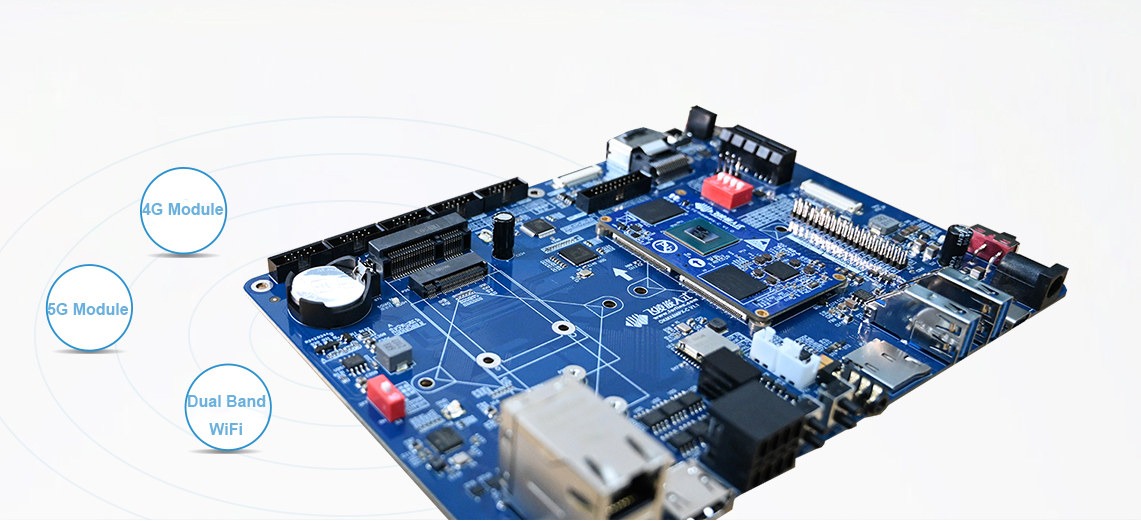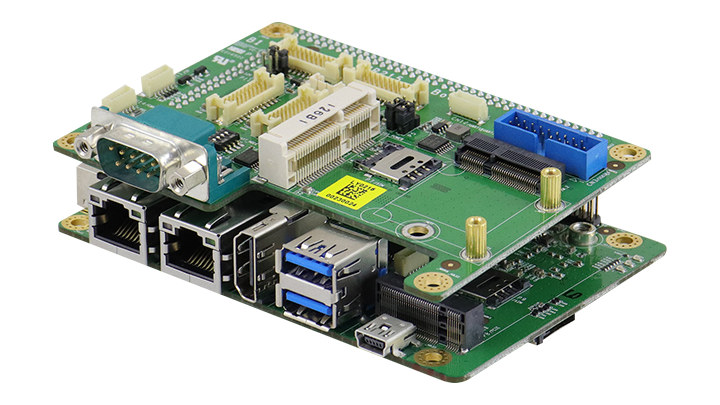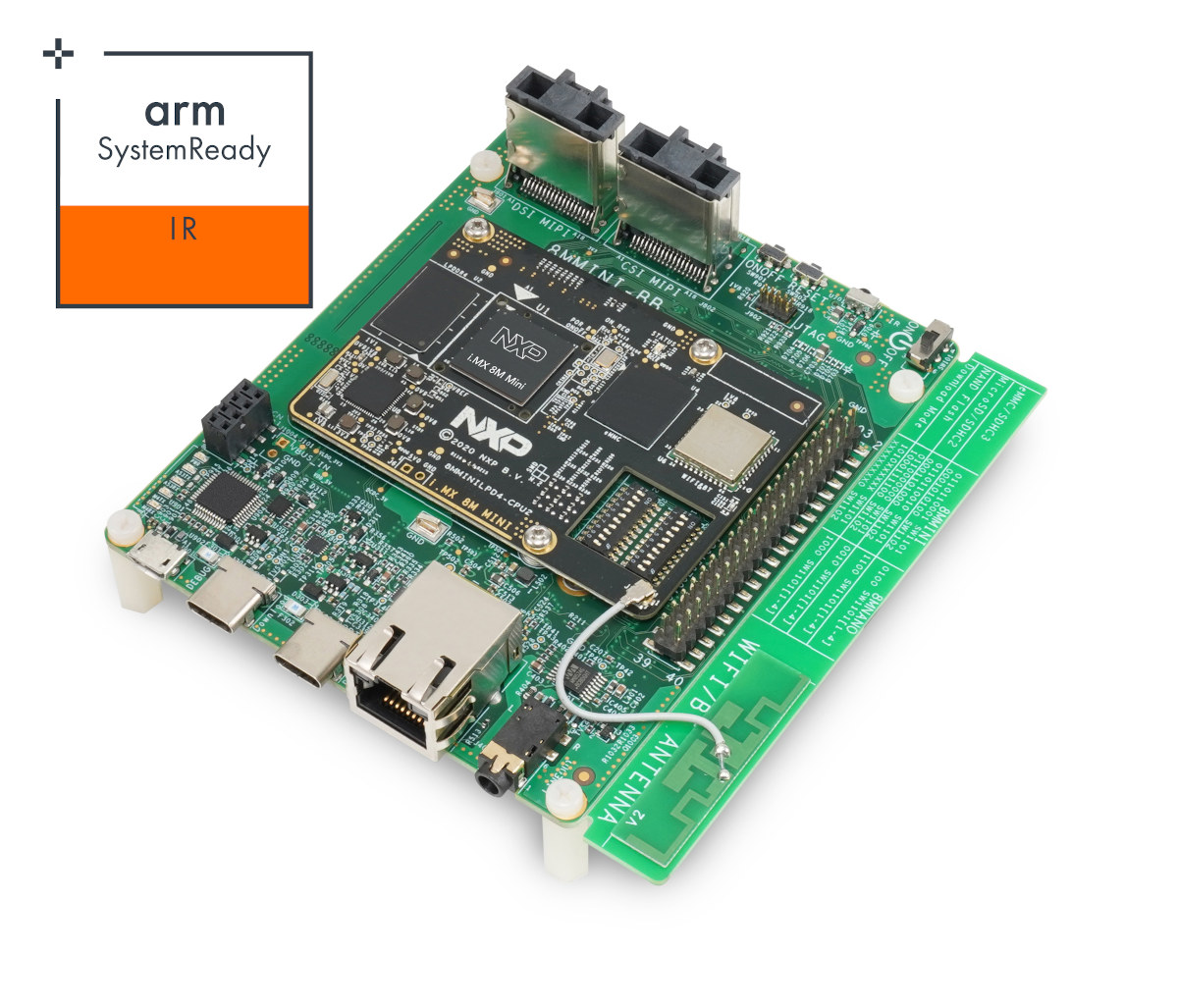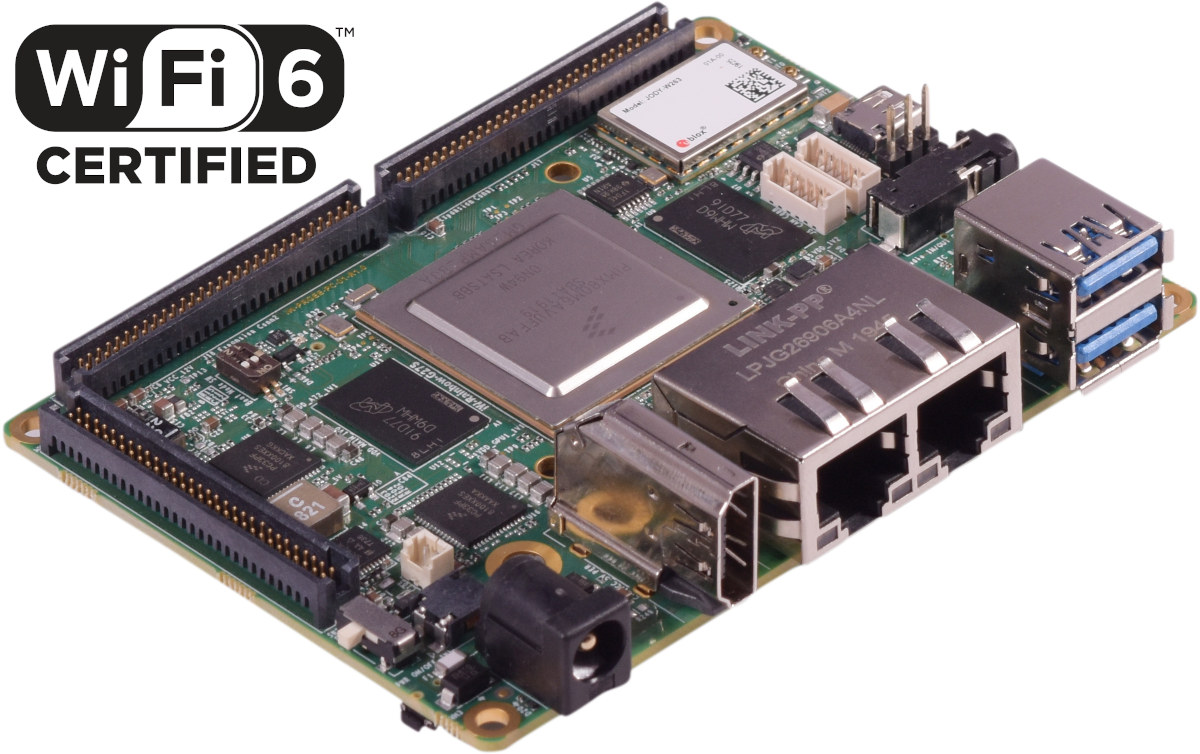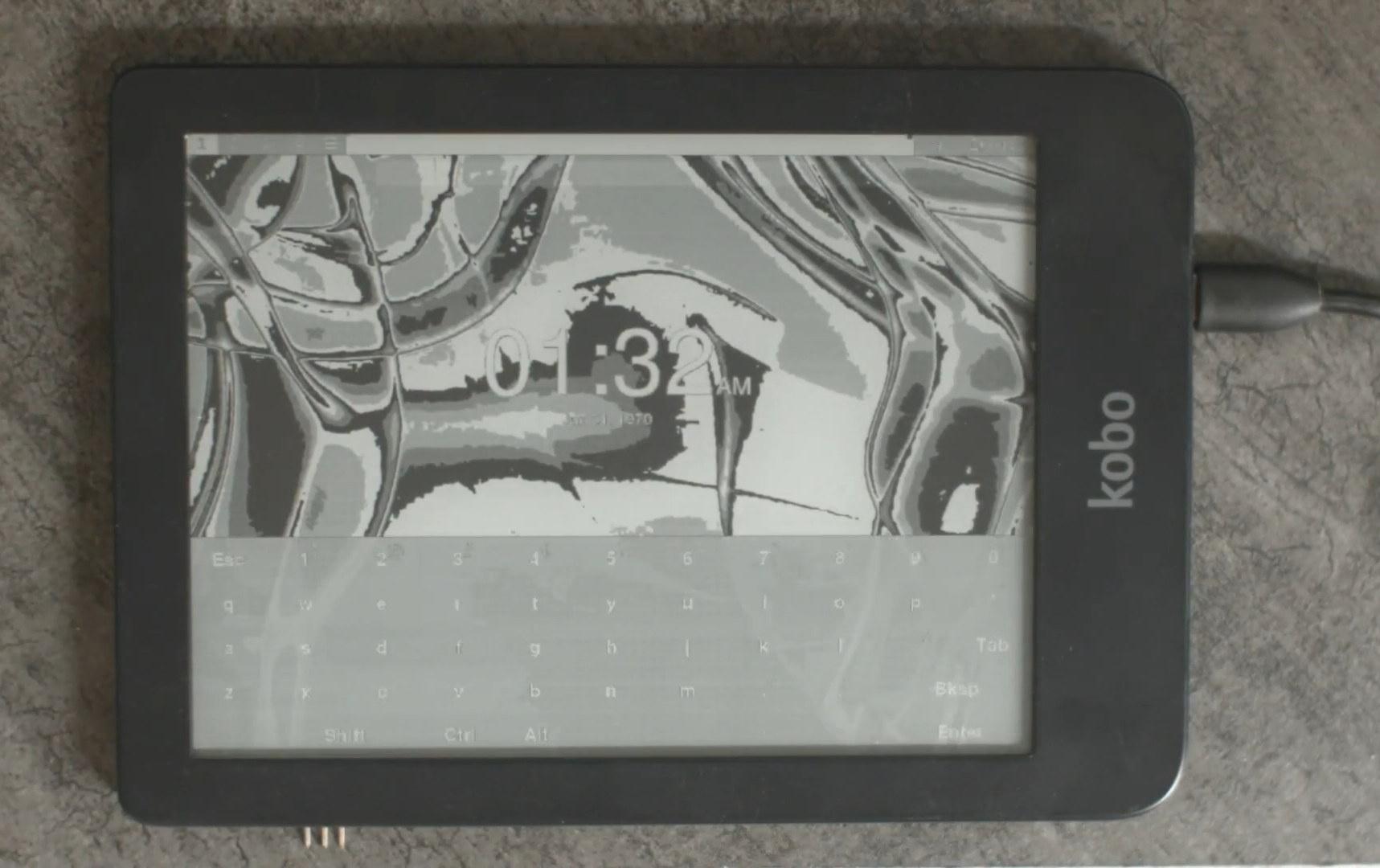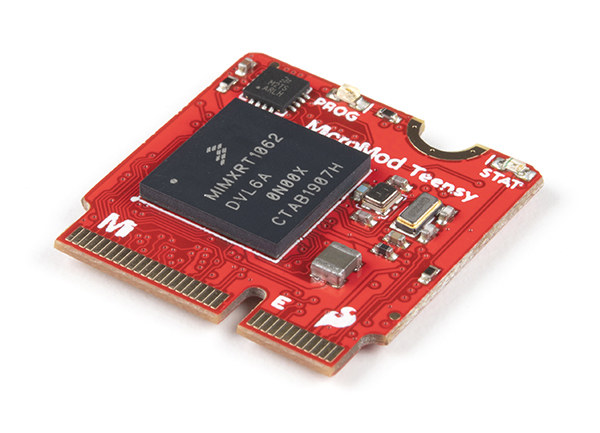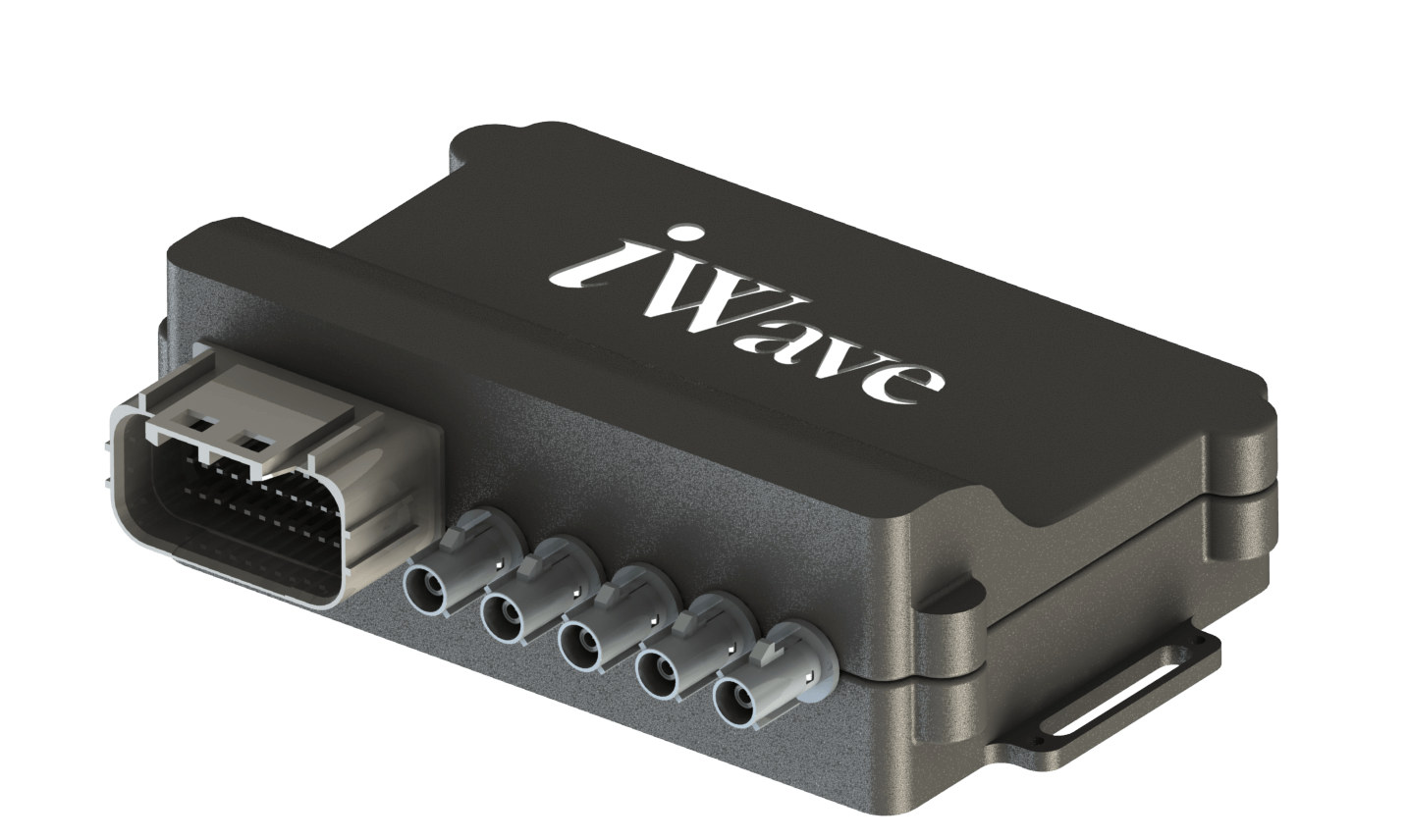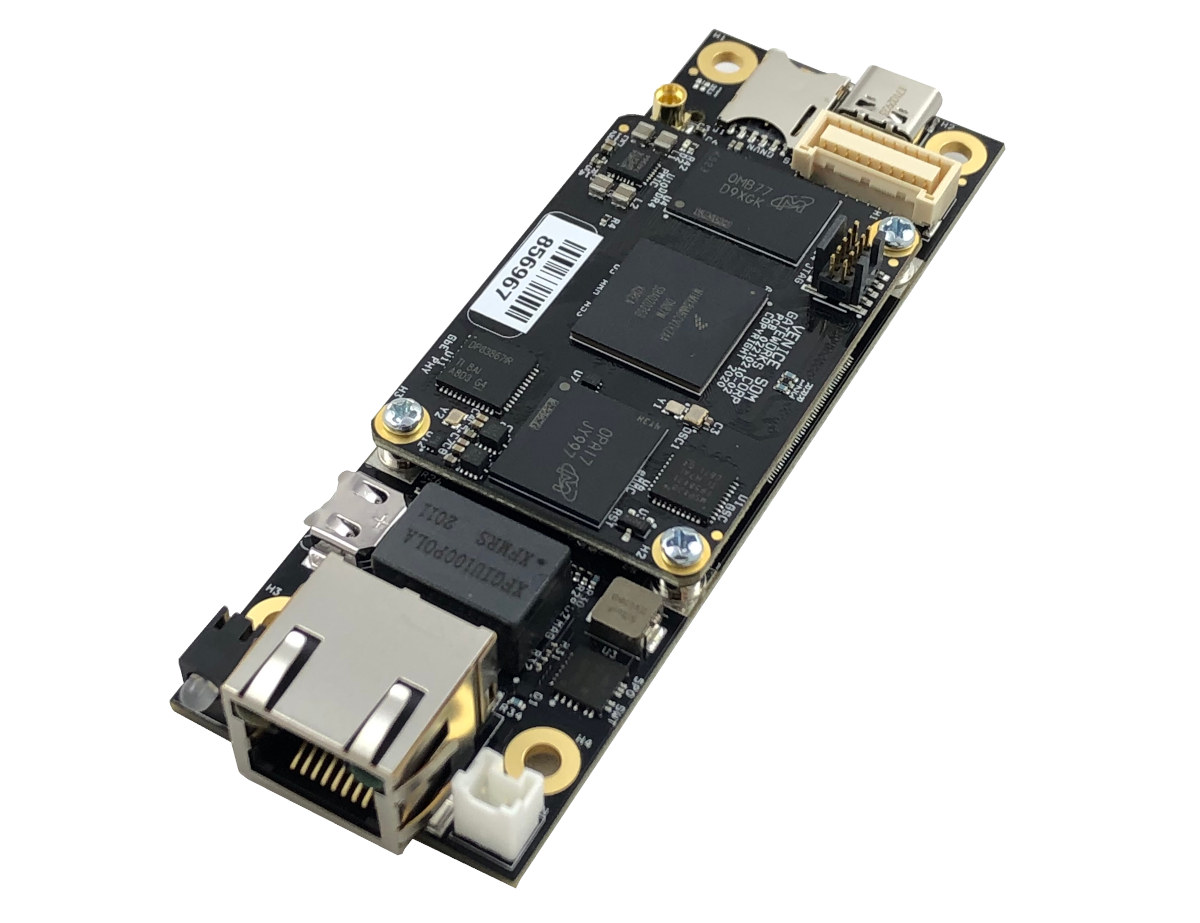We’ve already covered plenty of NXP i.MX 8M Plus systems-on-module and carrier boards, but here’s another solution with Forlinx OKMX8MP-C SBC single board computer based on FETMX8MP-C SoM with 4GB LPDDR4 and 16GB eMMC flash. The feature-packed board also offers dual Gigabit Ethernet, 4G and 5G cellular connectivity support via mPCIe and M.2 sockets, multiple display and camera interfaces, RS485 and CAN Bus connector, USB interfaces, various expansion headers, and more… Forlinx OKMX8MP-C specifications: Forlinx FETMX8MP-C System-on-Module SoC – NXP i.MX8M Plus with quad-core Cortex-A53 processor @ up to 1.6 GHz, Arm Cortex-M7 real-time core, Vivante 2D/3D GPUs, 1080p60 video decoder/encoder, 2.3 TOPS AI accelerator System Memory – 2GB, 4GB (default), 6GB, or 8GB LPDDR4 Storage – 16GB eMMC flash Ultra-thin board-to-board connector (4x 80-pin connector with 0.5mm pitch) Supply Voltage – 5V Temperature Range – -40°C to +85°C Dimensions – 62 x 36 mm (8-layer ENIG PCB) Storage – […]
5G compatible Arm Pico-ITX SBC is expandable through multi-function I/O board
IBASE IBR215 is a 2.5-inch Pico-ITX SBC powered by NXP i.MX 8M Plus quad-core ARM Cortex-A53 AI processor that supports 5G cellular connectivity via an M.2 3052 socket, and can be extended with an I/O expansion board with support for WiFi/BT, 4G/LTE, LCD, camera, NFC & QR-code functions. Equipped with up to 4GB RAM and 128GB flash storage, the single board computer has a ruggedized and fanless design that makes it suitable for industrial automation, smart home and buildings, smart cities and factories, retail environment, machine learning, and other industrial IoT applications. IBASE IBR215 specifications: SoC – NXP i.MX 8M Plus quad-core Arm Cortex-A53 processor @ up to 2.0 GHz with 512KB ECC cache, Arm Cortex-M7 @ up to 800 MHz, Vivante GC7000UL 3D GPU, Vivante GC520L 2D GPU, HiFi 4 DSP, 2.3 TOPS Neural Processing Unit (NPU) System Memory – 3GB DDR4 (optional 1/2/4GB) Storage 16GB eMMC flash (optional […]
The first Arm SystemReady IR certified platforms – NXP i.MX 8M Mini EVK & Compulab IOT-GATE-IMX8 gateway
A few months ago, we noted SolidRun HoneyComb LX2K became a certified Arm SystemReady ES platform. SystemReady is a certification program by Arm that ensures systems just work with generic operating systems like in the x86 world. When we looked at the details of the program in the article, we noted there were different categories including SystemReady ES for embedded servers and SystemReady IR for IoT Edge applications. The first SystemReady IR platform – NXP i.MX 8 Mini evaluation kit Arm has just announced the first SystemReady IR platform had just been certified. That device is the NXP i.MX 8M Mini EVK, and that means that anyone that uses the i.MX 8M family of devices with the associated Board Support Package (BSP) can build platforms that will pass the same certification process and boot compliant Linux distributions with minimal integration effort. We can see more details about the certifications on Arm developer’s website. NXP i.MX 8M Mini EVK achieved certification with NXP 2021 Q2 pre-release firmware, version LF […]
NXP i.MX 8 SoMs and SBC get WiFi 6 upgrade via u-Blox JODY-W3 module
We’ve just written about a WiFi 6 M.2 card based on JODY-W3 module that works with NXP i.MX 8 evaluation and development kit. But the u-Blox module appears to be the solution of choice for other NXP i.MX 8 platforms, as well as iWave Systems upgraded their existing systems-on-module and one single board computer with JODY-W3 adding WiFi 6 (802.11ax) and Bluetooth 5.1. iW-Rainbow-G27S SBC with WiFi 6 We first covered iW-Rainbow-G27S single board computer in January 2020. The board comes with NXP i.MX 8QuadMax hexa-core Cortex-A72/A53 processor, up to 8GB RAM, quad display support via HDMI, eDP & MIPI DSI, dual Gigabit Ethernet, and more. At the time, the board was offered with optional 802.11 a/b/g/n/ac WiFi 5 + Bluetooth 5.0, but now adds 802.11ax WiFi 6 connectivity for higher bandwidth applications. iW-RainboW-G27M SMARC and QSeven modules get 802.11ax & Bluetooth 5.1 connectivity iWave Systems iW-RainboW-G27M was introduced as […]
DIY Linux e-Reader – postmarketOS now runs on Kobo Clara HD
postmarketOS is a Linux operating system designed for phones, notably the PinePhone, and based on Alpine Linux. But now it’s possible to install the Linux distribution on Kobo Clara HD e-Reader (about $115), so you could have your own Linux e-Reader in a way that’s more versatile than with commercial solutions. The image can either be based on the vendor kernel or the mainline kernel. The latter works without modification to the X server, and the framebuffer can be used directly with either kernel, but most free e-reader programs such as koreader, plato, and inkbox are developed for the slightly different framebuffer API used in the vendor kernel. The demo below relies on Sxmo UI optimized for the PinePhone, and Martijn Braam notes that it can be pretty hard notably because only one hardware button is present on the Kobo device while the interface requires 3 hardware input buttons. But […]
MicroMod Teensy brings Teensy 4.0 board to M.2 form factor
Teensy 4.0, a low-cost board based on NXP i.MX RT1062 Arm Cortex-M7 crossover processor, is now getting a little brother with MicroMod Teensy following the same M.2 form factor as other Sparkfun MicroMod boards. Born from a collaboration between PJRC and Sparkfun, MicroMod Teensy has essentially the specs of Teensy 4.0 but with larger flash memory, and the board will be fully supported by the Teensyduino add-on to the Arduino IDE as noted by Paul Stoffregen on Twitter. MicroMod Teensy specifications: SoC – NXP i.MX RT1062 Arm Cortex-M7 processor at 600 MHz with 1024KB RAM (512KB is tightly coupled), Storage – 16MB serial flash (instead of 2MB on Teensy 4.0) M.2 MicroMod connector with USB Device up to 480Mbit/sec: Capable of enumerating as a USB keyboard, mouse, joystick, MIDI, audio, and more USB Host up to 480Mbit/sec: Capable of interfacing to USB flash drives, mice, keyboards, and more 7x Serial […]
Linux-based telematics gateway offers four CAN Bus interfaces, cellular & WiFi connectivity, and more
iWave Systems already provided some Linux-based vehicle diagnostic systems such as their NXP i.MX 7 powered OBD-II dongle with 4G LTE and GPS. But their latest model, the iW-Rainbow-G41 telematics gateway, goes a step further with an NXP i.MX 8 processor controlling four CAN Bus interfaces, and offering both wired (RS232/RS485, automotive Ethernet) and wireless (cellular, Wifi, Bluetooth) connectivity options. iW-Rainbow-G41 telematics gateway specifications: SoC – NXP i.MX 8 “DXL” Arm processor (Not sure what DXL is exactly, and iWave has yet to reply to our request for more information, but NXP shortly mentions i.MX 8X/XL processors in a page about V2X applications) System Memory – 1GB LPDDR4 (Upgradable up to 2GB) Storage – 8GB eMMC flash (Upgradable up to 64GB) Communication Interfaces Cellular – 4G LTE Cat 4, LTE Cat M1/NB1, option to upgrade to 5G; E-Call support 802.11 a/b/g/n/ac WiFi 5 with optional support for 802.11ax WiFi 6 […]
Venice GW7100 compact industrial SBC packs one Gigabit Ethernet port, one mPCIe socket
Gateworks introduced the new Venice Industrial IoT SBC Family based on NXP i.MX 8M Mini processor with up to two Ethernet ports and four mPCIe Sockets last September starting with GW7300 board with dual Gigabit Ethernet and three mPCIe sockets. But the US company has now announced the availability of the smallest member of the family with Venice GW7100 SBC equipped with just one Gigabit Ethernet port and one mPCIe socket in a compact 100x35mm form factor. Venice GW7100 specifications: SoC – NXP i.MX 8M Mini single, dual or quad-core Arm Cortex-A53 processor @ up to 1.6GHz, with Arm Cortex-M4 at 400+MHz, 3D GPU (OpenGL ES 2.0), 2D GPU, and 1080p VPU System Memory – 1 GB LPDDR4 (up to 4GB) Storage – 8 GB eMMC flash (up to 64GB) Connectivity 1x Gigabit Ethernet RJ45 port with passive PoE support WiFi/Bluetooth or Cellular connectivity via mini PCIe socket and Nano-SIM […]


